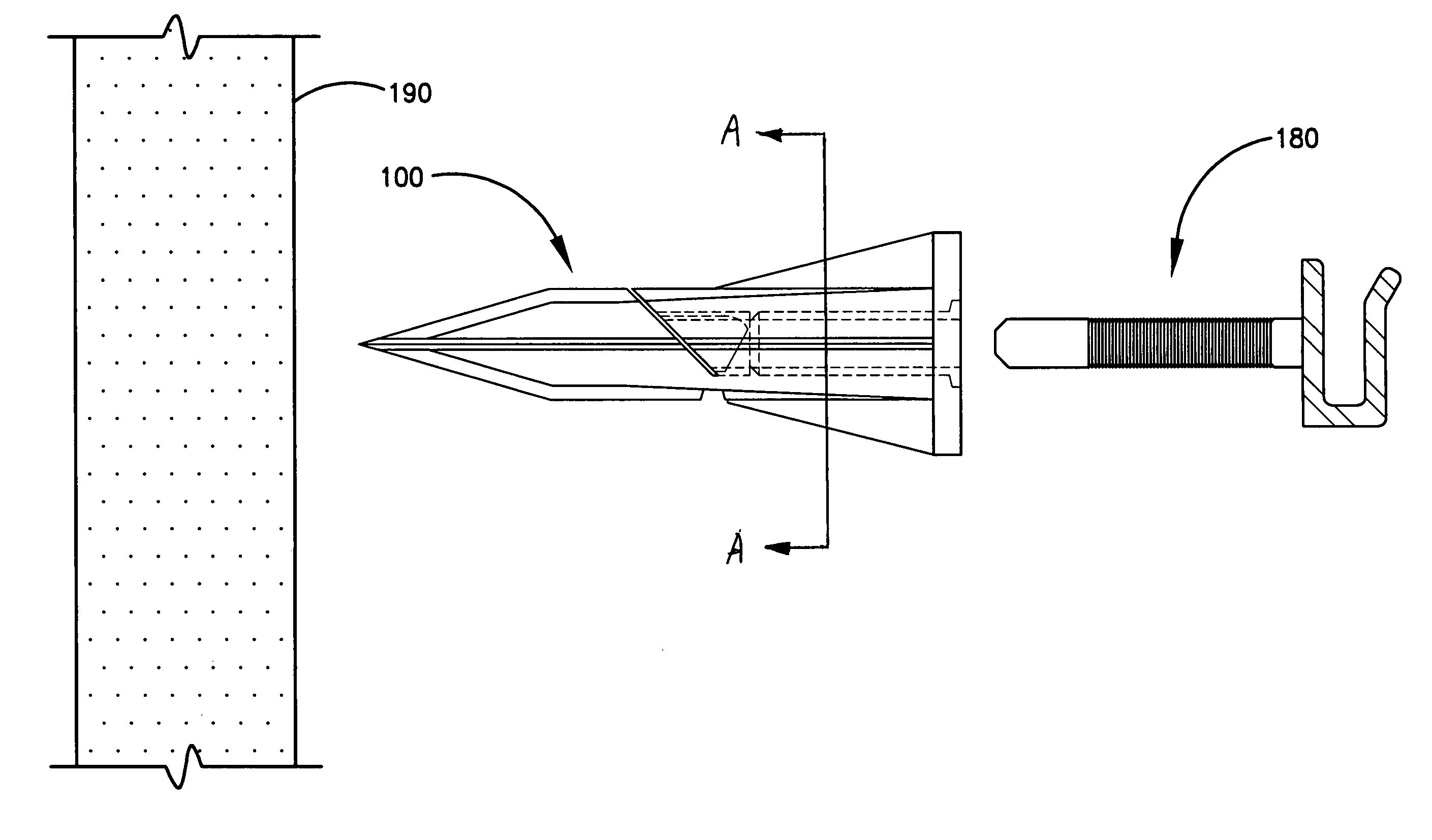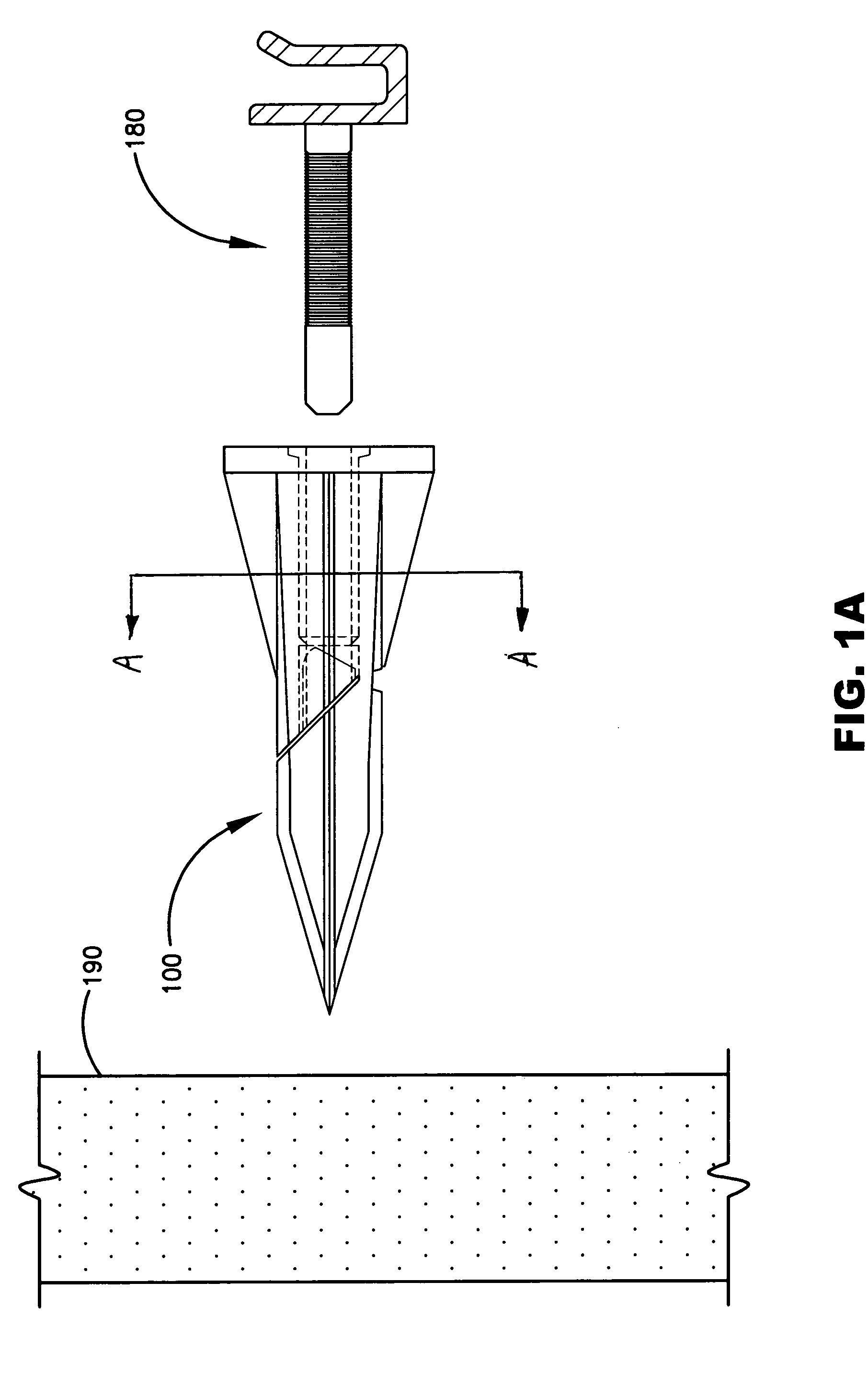Wall and ceiling fastening system and methods therefor
a technology for fastening systems and ceilings, applied in the direction of fastening means, securing devices, dowels, etc., can solve the problems of multiple fasteners, difficulty in keeping toggles, and higher cost associated with manufacturing metal anchors, so as to reduce the risk of wall blowout
- Summary
- Abstract
- Description
- Claims
- Application Information
AI Technical Summary
Benefits of technology
Problems solved by technology
Method used
Image
Examples
Embodiment Construction
[0026] The present invention will now be described in detail with reference to a few preferred embodiments thereof as illustrated in the accompanying drawings. In the following description, numerous specific details are set forth in order to provide a thorough understanding of the present invention. It will be apparent, however, to one skilled in the art, that the present invention may be practiced without some or all of these specific details. In other instances, well known process steps and / or structures have not been described in detail in order to not unnecessarily obscure the present invention. The features and advantages of the present invention may be better understood with reference to the drawings and discussions that follow.
[0027] To facilitate discussion, FIGS. 1A-1E, 2A-2E, 3A-3D, 4A-4D, 5A-5C, and 6A-6C illustrate various views and installation stages of the wall and ceiling fastening system and methods of the present invention. In addition, “wallboard” is used interch...
PUM
 Login to View More
Login to View More Abstract
Description
Claims
Application Information
 Login to View More
Login to View More - R&D
- Intellectual Property
- Life Sciences
- Materials
- Tech Scout
- Unparalleled Data Quality
- Higher Quality Content
- 60% Fewer Hallucinations
Browse by: Latest US Patents, China's latest patents, Technical Efficacy Thesaurus, Application Domain, Technology Topic, Popular Technical Reports.
© 2025 PatSnap. All rights reserved.Legal|Privacy policy|Modern Slavery Act Transparency Statement|Sitemap|About US| Contact US: help@patsnap.com



